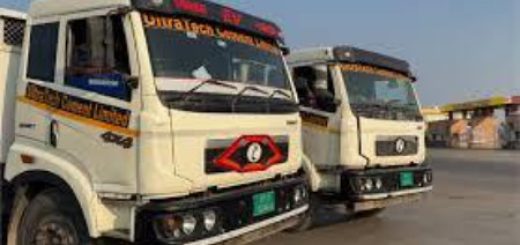Green Revolution on Wheels: LNG Trucks Transforming Steel and Cement Logistics
India’s trucking market is set to quadruple by 2050, offering immense scope for emissions reduction and sustainable investment. The steel and cement industries, crucial for global infrastructure and economic growth, are major contributors to environmental concerns. They produce significant carbon emissions and consume enormous amounts of energy. According to the Council on Energy, Environment and Water (CEEW), the Indian steel industry emitted 297 million tonnes of CO₂ in 2021-22 during crude steel production, with an average emission intensity of 2.36 tCO₂/tcs, higher than the global average of 1.89 tCO₂/tcs.
The Indian cement industry, while among the most energy-efficient globally, inherently produces carbon emissions due to limestone processing and fossil fuel usage. Statista reports that cement manufacturing emissions in India reached 164 million metric tons of CO₂ in 2022, marking a significant increase over recent decades. Traditional transportation methods, mainly diesel-powered trucks for logistics, further exacerbate this impact.
India is actively promoting alternative fuel trucks for logistics to foster low-carbon growth in these hard-to-abate industrial sectors. As the demand from steel and cement sectors rapidly rises due to industrialization and urbanization, transitioning to LNG trucks can be crucial in reducing emissions.
Benefits of LNG Trucks
LNG trucks are emerging as a viable, sustainable alternative to traditional diesel trucks. LNG, derived from natural gas, is a cleaner-burning fuel that produces fewer CO2 emissions, nitrogen oxides (NOx), and particulate matter. Key advantages include:
- Better fuel efficiency and lower maintenance costs
- Extended range of 1,200 to 1,400 kilometers on a single tank
- Long-term cost savings despite higher initial investment
- Quieter operation, reducing noise pollution
Advancing sustainable logistics in steel and cement
Deploying LNG trucks in the steel and cement industries can bring substantial environmental and economic benefits. OEMs are working with global leaders to speed up the production of diverse green truck models. Developing infrastructure like supply networks, LNG pumps, and charging points is crucial for this transition.
Key industry players such as Oil Marketing Companies (OMCs), GAIL and its subsidiaries, and Baidyanath Liquefied Natural Gas (BLNG) are working to fulfill this goal. Cement and steel companies are partnering with logistics providers to incorporate LNG trucks into their supply chains, demonstrating a commitment to reducing carbon emissions and achieving sustainability goals.
Challenges in adopting LNG trucks include:
- Limited refueling infrastructure
- Higher initial costs
- Need for continued research and development
These challenges can be addressed through
- Strategic collaborations between government and private sector
- Economic incentives like subsidies and tax breaks
- Investments in R&D for improved performance and reduced costs
- Industry partnerships to share costs and risks
The road ahead: Embracing the LNG truck revolution
As the world grapples with the pressing need for sustainability, adopting LNG trucks offers a promising pathway for the steel and cement industries. While challenges exist, they can be overcome through strategic collaborations and economic incentives.
By investing in cleaner transportation solutions, these industries can mitigate their environmental impact and pave the way for a greener and more sustainable future. The revolution is already underway, and with continued efforts and collaboration, LNG trucks could become the backbone of a more sustainable logistics network in the steel and cement sectors.
According to Emkay Research, India could see 50,000 LNG trucks serviced through 400 LNG retail stations by 2030. This projection underscores the potential for significant growth and environmental impact in the coming years.
As industries and governments increasingly prioritize sustainability, the adoption of LNG trucks in the steel and cement sectors represents a crucial step towards reducing carbon emissions and achieving climate goals. With ongoing technological advancements and supportive policies, the future of logistics in these industries looks cleaner, greener, and more efficient.




Recent Comments